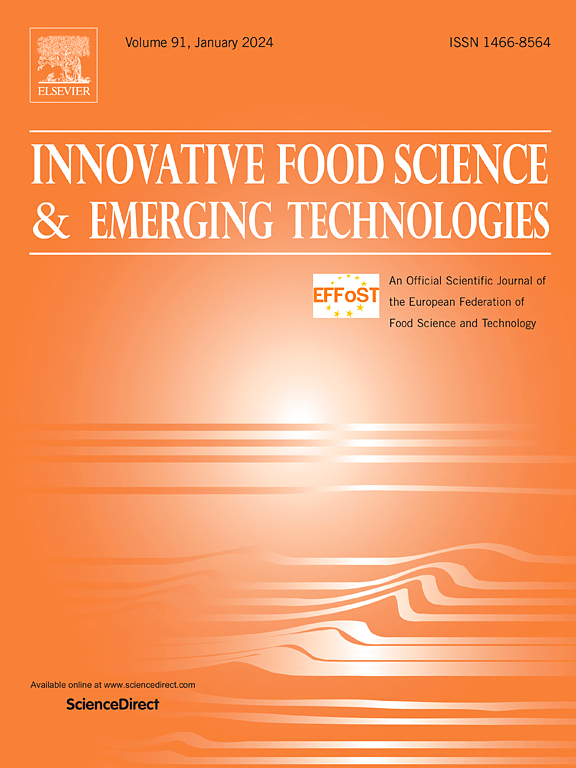Development and validation of a susceptor-assisted radio frequency heating strategy for improving uniformity in powdered foods
IF 6.3
1区 农林科学
Q1 FOOD SCIENCE & TECHNOLOGY
Innovative Food Science & Emerging Technologies
Pub Date : 2025-02-03
DOI:10.1016/j.ifset.2025.103939
引用次数: 0
Abstract
The objective of this study was to model and analyze susceptor-assisted radio frequency (RF) heating for powdered foods, with a focus on improving energy efficiency and heating rate. A 6 kW, 27.12 MHz RF system, combined with a finite element model developed using COMSOL software, was employed to simulate and validate the RF heating process of corn flour in metal susceptors. Experimental results demonstrated that strategically positioning RF wave transmission holes along the long sides of the metal susceptor, particularly near cold spots, resulted in optimal heating uniformity, enhanced heating rate, and improved energy efficiency. Notably, the energy transmission area was identified as the most significant factor affecting overall energy efficiency. The validated simulation showed that the optimal pore diameter increased with the sample's length-width sequence and height. However, when the pore size exceeded a certain threshold, the electric field concentration decreased. Optimized susceptor designs improved energy efficiency by approximately 10 %, with specific configurations achieving 15 % and 18 % enhancements for susceptor sizes of 300 mm × 180 mm and 400 mm × 240 mm, respectively. Additionally, the study established a quantitative relationship between the sample's length-width sequence, height, and optimal pore diameter, with regression errors maintained below 5 %. These findings offer valuable insights into the optimization of RF heating in metallized food packaging, providing a foundation for more energy-efficient designs in industrial applications.
用于改善粉末状食品均匀性的感应辅助射频加热策略的开发和验证
本研究的目的是模拟和分析粉状食品的射频加热,重点是提高能源效率和加热速度。采用6kw, 27.12 MHz的射频系统,结合COMSOL软件建立的有限元模型,对金属电感器中玉米粉的射频加热过程进行了仿真验证。实验结果表明,沿着金属感受器的长边,特别是靠近冷点的地方,策略性地定位射频波传输孔,可以获得最佳的加热均匀性,提高加热速率,提高能源效率。值得注意的是,能源传输面积被确定为影响整体能源效率的最重要因素。经验证的模拟结果表明,最佳孔径随样品长宽序列和高度的增加而增大。然而,当孔径超过一定阈值时,电场浓度下降。优化后的电纳设计将能量效率提高了约10%,在300 mm × 180 mm和400 mm × 240 mm的电纳尺寸下,特定配置分别提高了15%和18%。此外,研究还建立了样品长宽序列、高度与最佳孔径之间的定量关系,回归误差保持在5%以下。这些发现为金属化食品包装中射频加热的优化提供了有价值的见解,为工业应用中更节能的设计提供了基础。
本文章由计算机程序翻译,如有差异,请以英文原文为准。
求助全文
约1分钟内获得全文
求助全文
来源期刊
CiteScore
12.00
自引率
6.10%
发文量
259
审稿时长
25 days
期刊介绍:
Innovative Food Science and Emerging Technologies (IFSET) aims to provide the highest quality original contributions and few, mainly upon invitation, reviews on and highly innovative developments in food science and emerging food process technologies. The significance of the results either for the science community or for industrial R&D groups must be specified. Papers submitted must be of highest scientific quality and only those advancing current scientific knowledge and understanding or with technical relevance will be considered.

 求助内容:
求助内容: 应助结果提醒方式:
应助结果提醒方式:


